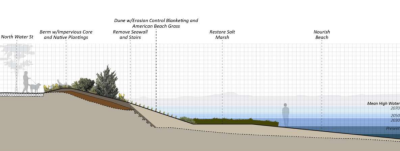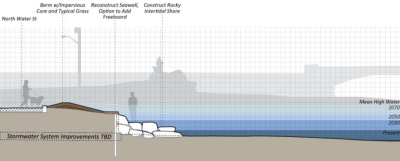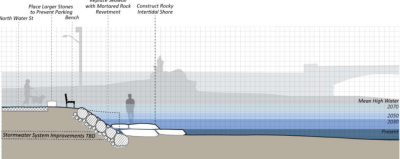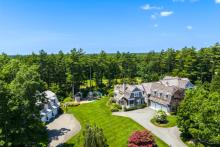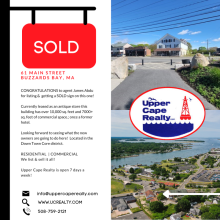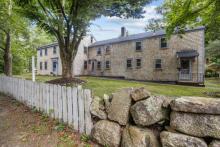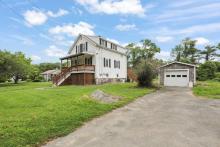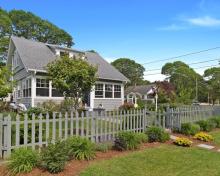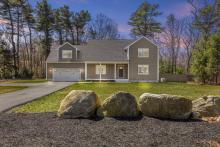Plans presented on potential improvements to North Water Street seawall
Officials working on the improvement of North Water Street beach and seawall have created four conceptual ideas to improve the seawall and could reduce potential flood risk.
In a public hearing held Monday, May 5, officials from the Wareham Land Trust and Woods Hole Group, a Bourne-based environmental engineering firm presented the four plans to stakeholders.
“The first step in any project like this is to go out, get a survey and actually map what’s on the ground,” said Woods Hole Group Project Manager Adam Finkle. “If you want to make changes in the future you’ve got to establish the baseline.”
Teams from both organizations recently finished studying the site, assessing the condition of the current seawall and identifying the exact boundaries of the beach, salt marsh and dunes.
While no plan has been chosen and construction is years away, the baseline has been established. Linnea Laux of the Woods Hole Group presented the four conceptual ideas the group has created.
The first idea is the least expensive according to Laux. It aims to repair the seawall and “enhance the sight” by improving the stairs and adding benches as well as other functional improvements , which is a priority for nearby residents.
Laux added that the plan would also bring some native plants back to the area..
“This is likely the least expensive but the biggest thing about this alternative is that it’s not really a long term measure,” she said.
Laux said the plan would serve as a good interim step until a larger project could be completed in the future.
The second idea involves removing the current seawall and creating what Laux described as a “living shoreline” in its place.
A living shoreline is an extended bank of sand and vegetation.
Laux said a living shoreline would greatly improve the habitat for local wildlife but it is very expensive and would not protect North Water Street or other nearby infrastructure, such as water lines, very well.
This plan also includes placing large rocks around storm water outfalls to protect them from the elements.
Laux said the third alternative has all the components of the second and incorporates a reconstructed seawall underneath the living shoreline.
“The sea wall’s acting as a backup in case there is a big storm that happens and there is a lot of erosion,” Laux said.
Laux also presented the idea of making the seawall higher than it currently is to help reduce the amount of flooding on North Water Street. However, she said the seawall will not prevent all flooding because water can flow down Onset Avenue and reach North Water Street.
“One of our primary objectives is to make sure that when the next Hurricane Bob or similar storm happens, the wall doesn’t fail and the road isn’t lost,” Finkle said. “We don’t think the wall alone is enough to keep the flooding out but we do want to make sure there is some reinvestment in the infrastructure.”
The last idea proposed an entirely different kind of seawall called a rock revetment, an anti-erosion structure comprised of rocks that slants up away from the shore.
Laux said one of the major benefits is the wall’s ability to absorb crashing waves instead of reflecting water back into the river.
However, Laux said there would be a loss of recreational space with this plan.
“It’s an effective shoreline protection approach but we’ve pinched ourselves to the point where we don’t have a lot of real estate left,” Finkle said.
Several residents at the meeting said the beach along the shore has gotten smaller and smaller every year and wanted to know if there was a way to get any of the beach back in this process.
Finkle explained beach reconstruction was not the main goal of the project. However, when hard infrastructure like a seawall or rock revetment are installed, it prevents the erosion of the land and maintains the elevation of the beach down below.
“Typically a seawall will have a little bit more erosion in front of it,” Finkle said. “A rock revetment helps absorb that wave energy and not reflect it onto the beach. You’re still preventing the landform from eroding and contributing to the sediment adjacent to the beach.”
All four plans incorporate improvements to beach access such as new sets of stairs and aluminum ramps and look to give residents places to park as well.




